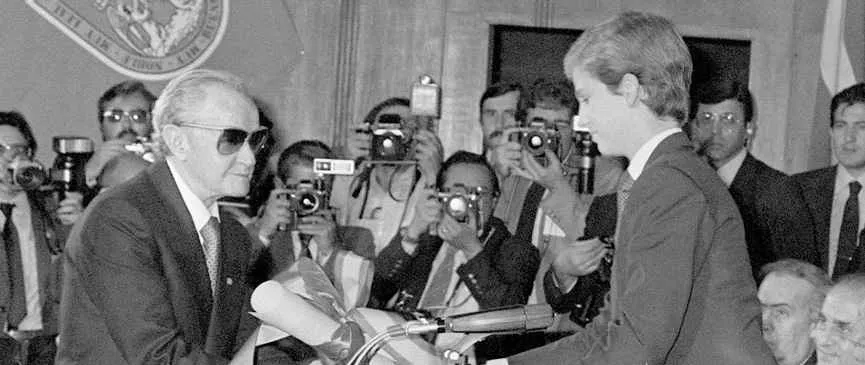Main content
Juan Rulfo Prince of Asturias Award for Literature 1983

The Mexican writer Juan Rulfo (Acapulco, Jalisco, Mexcio, 1917 - Ciudad de México, México, 1986) first went to school in the town of San Gabriel. In 1925, the family moved to Guadalajara, and the following year he entered the Luis Silva school.
Following the death of his mother in 1927, he went to live with his maternal grandmother. He went to secondary school in Guadalajara and, in 1933, due to a strike, he gave up his studies. In 1935 he moved to Mexico City, where he arrived have lived the revolution of the "Cristeros", the murders of his grandfather and father, the death of his mother. These experiences made a profound mark on his future literary work. In Mexico City, Rulfo found a job in the Immigration Office, a post which he filled until 1945. There he met Efrén Hernández, already famous as a short- story writer. "He," says Rulfo, "read my first bits: it was he who published my first short story, La vida no es seria en sus cosas. From 1945 onwards he had other jobs in Guadalajara and the capital. From 1963 he was director of the publications department of the National Indigenist Institute.
He published his first short stories in the magazines América, of Mexico City, and Pan, of Guadalajara. Some of these tales appear in El llano en llamas (1953), the book which made him famous as a storyteller and which is a landmark in the development of the Mexican short story. Two years later his only novel, Pedro Páramo, appeared, which, together with the aforementioned volume and the compilation of his work for cinema, El gallo de oro (1980), make up the whole of his literary output.
In his first book first person narrative, tragic characters and desolate, hostile landscapes, where man struggles constantly to survive, predominate. What is known as Magical Realism is created by Rulfo, using the juxtaposition of real and fantastic motifs: the presence of phantoms, the wind filled with pain which is only visible when there is a full moon. Humour is rare; it is only to be found in the tale El día del derrumbe, a lively political satire.
The narrative techniques employed by Rulfo in "El llano en llamas" (in which Faulknerian influences can be detected) reappear, in a perfected form, in "Pedro Páramo", one of the most complex and intense Mexican novels. The book begins with the arrival of Juan Preciado (the son of Pedro Páramo), in Comala, in search of his father. He finds a ghost town, full of murmurs, echoes, shadows, phantoms, set in an arid region, without either animal or plant life. The magical style of Rulfo brings that ghost town to life. The transition which occurs between the real and the unreal is almost imperceptible. The characters have characteristics of living people, but also of the dead. In time, it passes from present to past; in space, from one scene to another, with no need for formal rhetorical transitions. While the fragments are linked together apparently with no chronological order, it is possible to uncover that the author has made use of motifs and indications which help the reader to order the plot, which unravels around the violent life of Pedro Páramo, whose unsatisfied love for Susana makes him hate all that surrounds him. To avenge himself, he lets the inhabitants of Comala perish. The emotional intensity, together with the complex structure, make this work one of the most successful novels of Spanish American Literature, and in the world, this century. Bestowed with the Xavier Villaurrutia Award in 1956 for Pedro Páramo and the Mexican National Award for Literature in 1970, he was elected to the Mexican Academy of the Spanish Language in 1976.
End of main content
